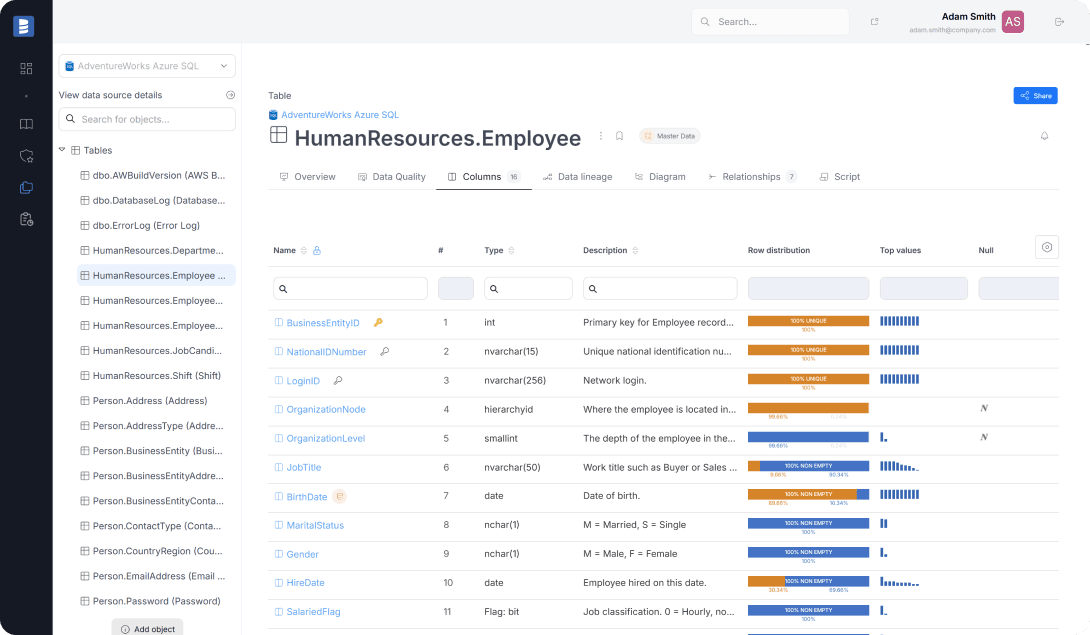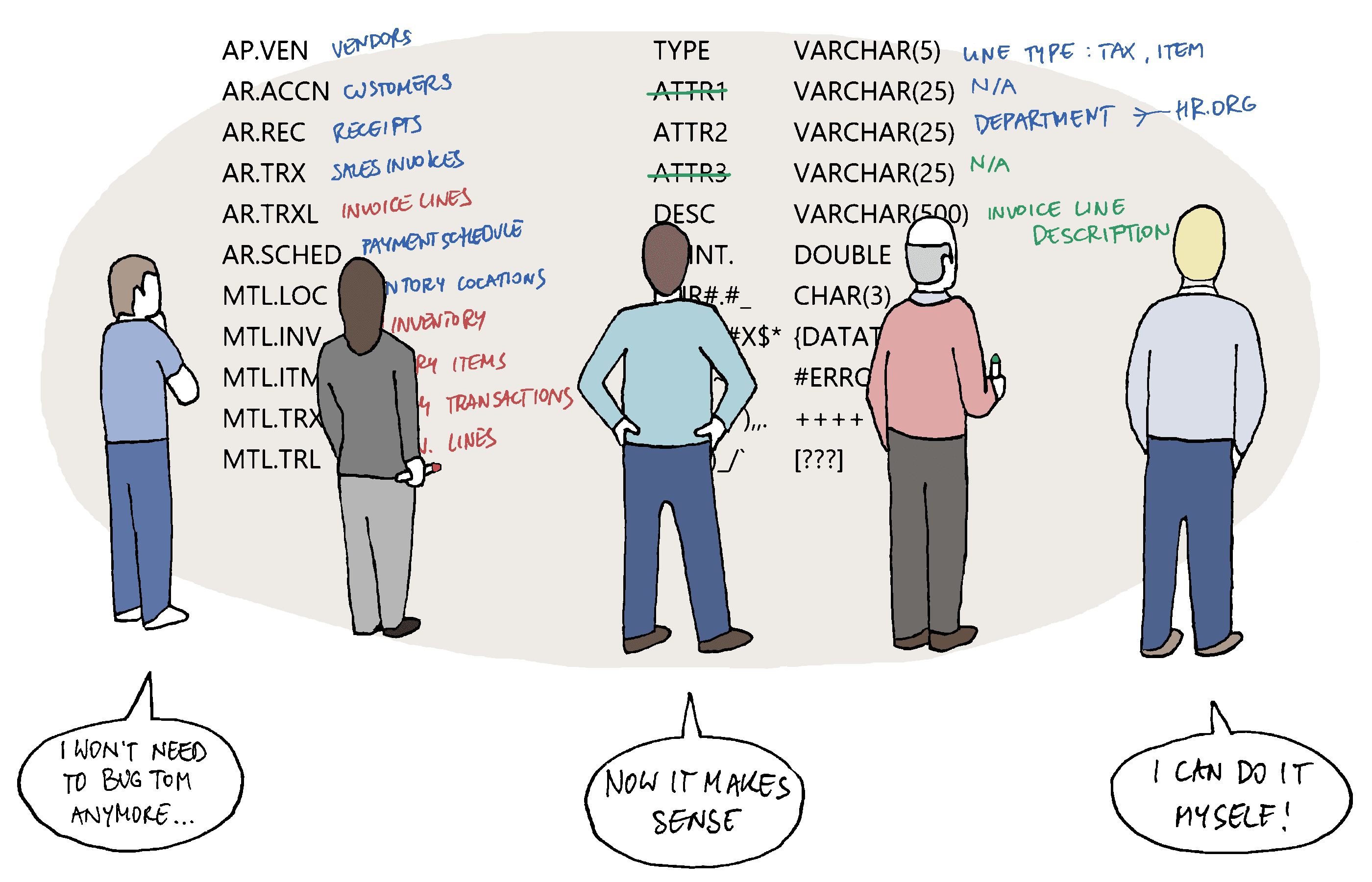Join 1000+ Satisfied Customers Using Dataedo
















Document your databases easily
Document and visualize
database relationships
Understanding relationships between tables is crucial for querying of a database. Those relationships are often nonobvious as foreign keys are rarely defined in a database schema. Without this information you left with guess work, asking your colleagues, and exposed to errors in your queries.
But it does not have to be that way. Allow Dataedo to extract what foreign keys information is defined in a database and complete the rest in the same format so that you have a complete view of the relationships in your database. No more guessing.
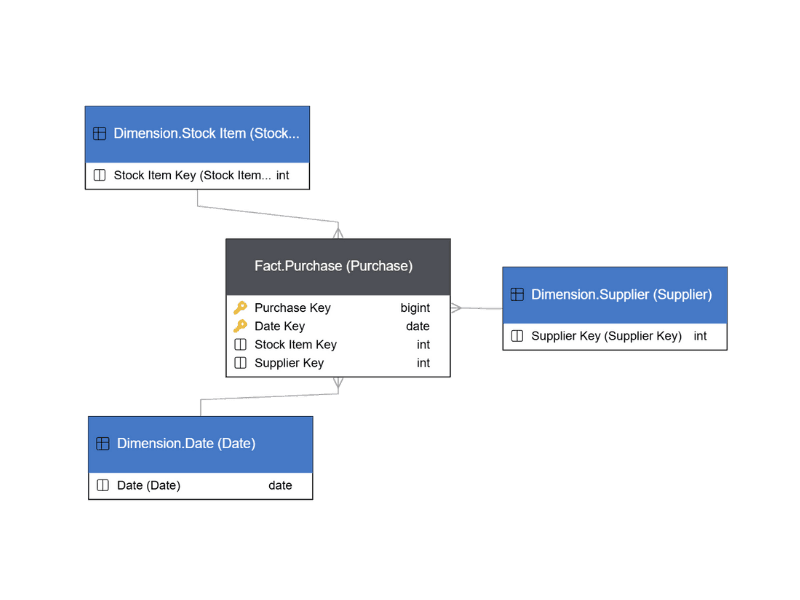
A nodepad for your database
Do you know what attribute1 column means? Is it in use? Or how is due_date calculated? Or what does ‘A’ value in status column mean? Data structures can be confusing and sometimes misleading and Dataedo allows you to explain meaning and purpose of each data element in your database. You can annotate data elements, provide meaningful aliases, and add additional information in structured format using custom fields.
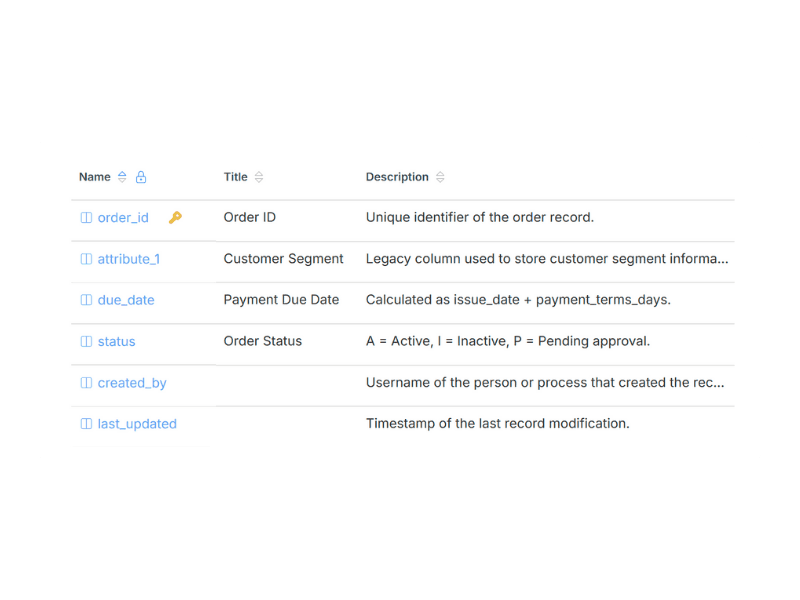
Organize databases with domains and data products
Data sources in your organization can hold hundreds or thousands of tables and data structures. It might be hard or impossible to make sense of this. Dataedo helps you manage this complexity by allowing you to create domains and data products and use them to organize large data sets.
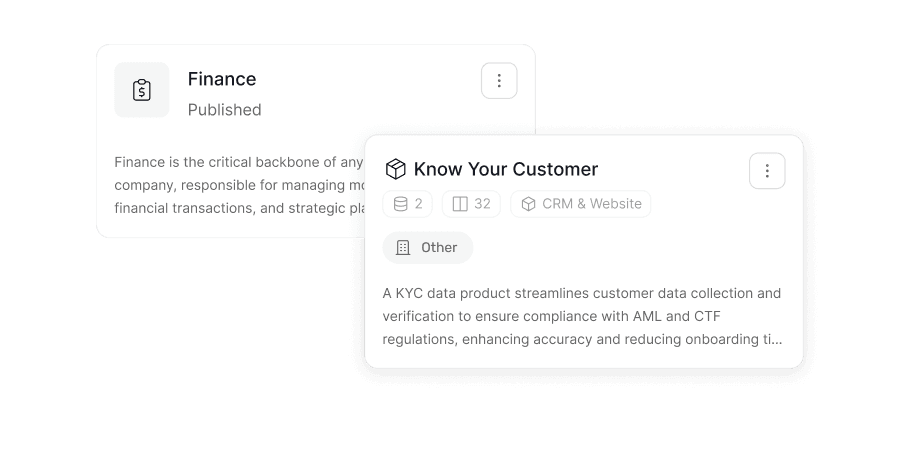
Capture tribal knowledge
There is no single person in your team or organization that knows it all. Dataedo’s shared metadata repository and community feature allows your entire team to collectively capture and preserve what you know about your databases.
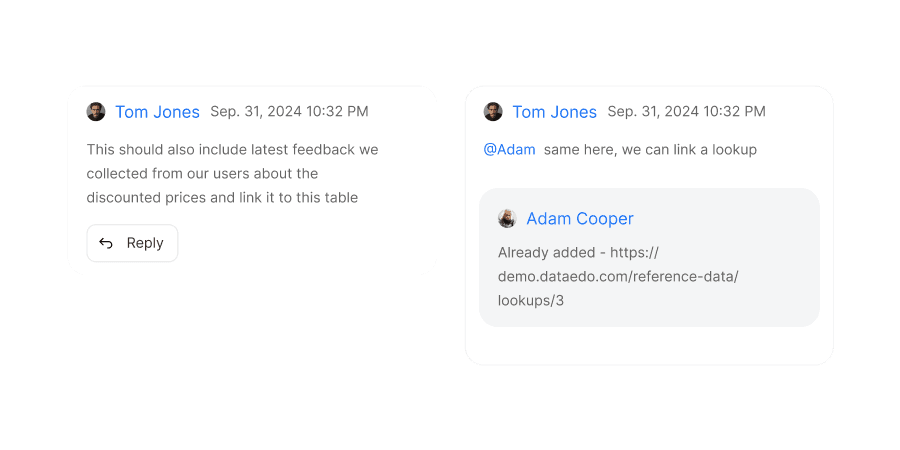
Documentation of all your databases in one place
With Dataedo you can document all your data sources: databases, ETLs, BI tools, data lakes, applications.
We have 50+ native connectors and are always working on adding more.
We have 50+ native connectors and are always working on adding more.

Now, everyone can understand your databases
Make complex and convoluted designs readable
Turn sprawling database structures into clear, visual models that are easy to explore and understand.
Unlock data in your organization
Give everyone access to the knowledge behind your data. No more tribal knowledge or hidden structures.
Get new people on board quicker and with less hustle
Help new team members understand databases faster with intuitive diagrams and detailed documentation.
Improve communication between developers, admins, architects, and business users
Create a common language around data so every stakeholder can collaborate effectively and confidently.
Facilitate reporting & analytics
Provide analysts and BI teams with clear insights into how data is organized, making reporting faster and more accurate.
Keep knowledge in your organization
Preserve critical data knowledge in one place, independent of individuals - so it’s never lost when people move on.
Key features
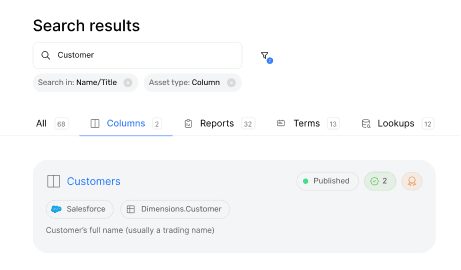
Data Catalog
Build a complete catalog of your databases, tables, and columns in one central documentation repository.

ER Diagrams
Visualize your data structures with interactive diagrams and define cross-database relationships to see how tables connect across systems.
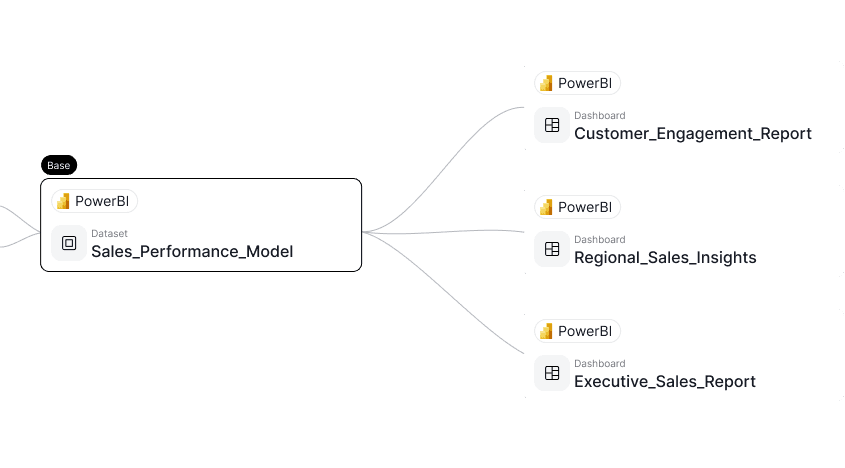
Data Lineage
Visualize how data flows across systems, trace issues back to their source, and understand downstream impacts of changes.
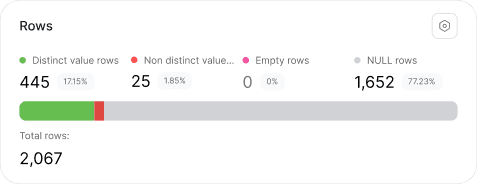
Data Profiling
Analyze your source data to understand structure, uncover anomalies, and ensure reliable datasets for reporting, analytics, and AI.
Schema Change Tracking
Stay on top of schema changes and version history to ensure your catalog remains complete and up to date.
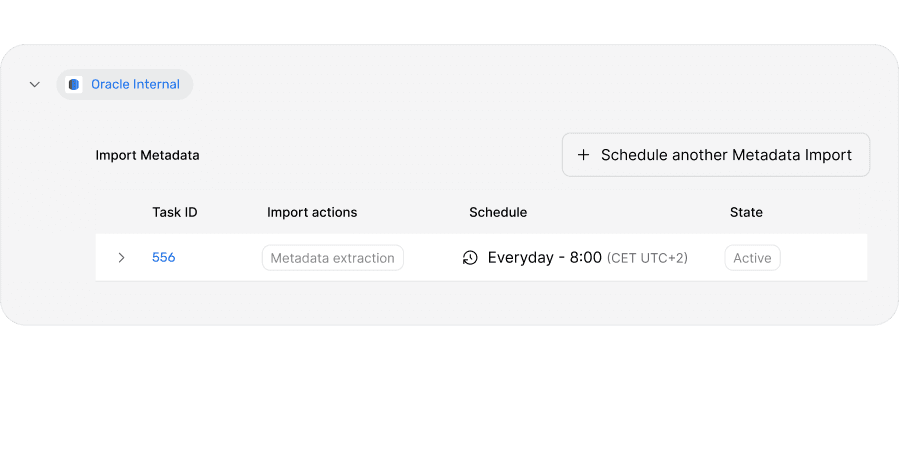
Automatic updates
Automatically sync your metadata with source systems to ensure your documentation always reflects the current state of your databases.
Use cases

BI & Analytics
Remove friction of reporting and analytics by making data structures and data clear for everyone.
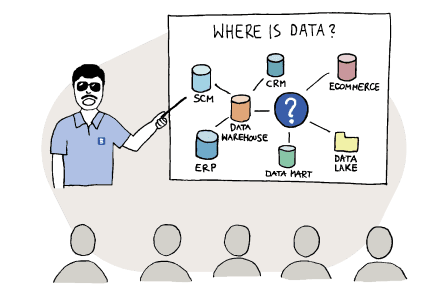
Data Warehousing
Provide useful documentation of your data warehouse and facilitate better use of it throughout the organization.
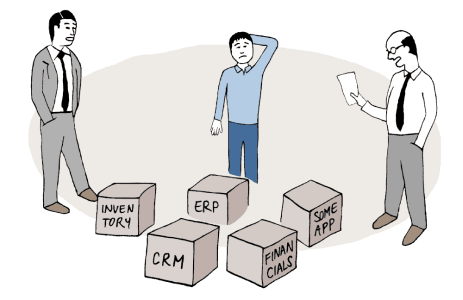
Application Development
Allow every developer to grasp data models quickly without guesswork and unnecessary questions.

Legacy Databases
Discover structure of your legacy databases and document them as you learn, so that the other people do not have to learn the same things over and over again.
Why our customers love Dataedo?
Dataedo is a lightweight solution with great customer service and active product development (recently data quality). The ability to run SQL scripts on the repository brings additional flexibility."
We jump started all of our Data Governance efforts using the tool. We documented key databases quickly and easily and published the information to our analyst community."
Dataedo is an amazing tool that continues to grow and improve."
Datedo consistently improves while delivering exceptional support that is quick, competent, and highly reliable."
Dataedo is easy to use, offers great functionality, and provides excellent customer service that always listens to the customer."
Dataedo excels at data cataloging, and the support from the Dataedo team is top-notch."
Dataedo provides ease of use and covers so many areas from a Data Governance perspective. You really can put everythng in one place."
Dataedo is a fantastic tool, and I love working with it—especially with the continuous improvements being made and planned."
Join 1000+ Satisfied Customers Using Dataedo









Piotr Kononow
Founder
Create interactive database documentation
Unlock data in your organization. Explore Dataedo through a preconfigured data catalog with sample data, try it with your own data during a 14-day free trial, or book a demo.

